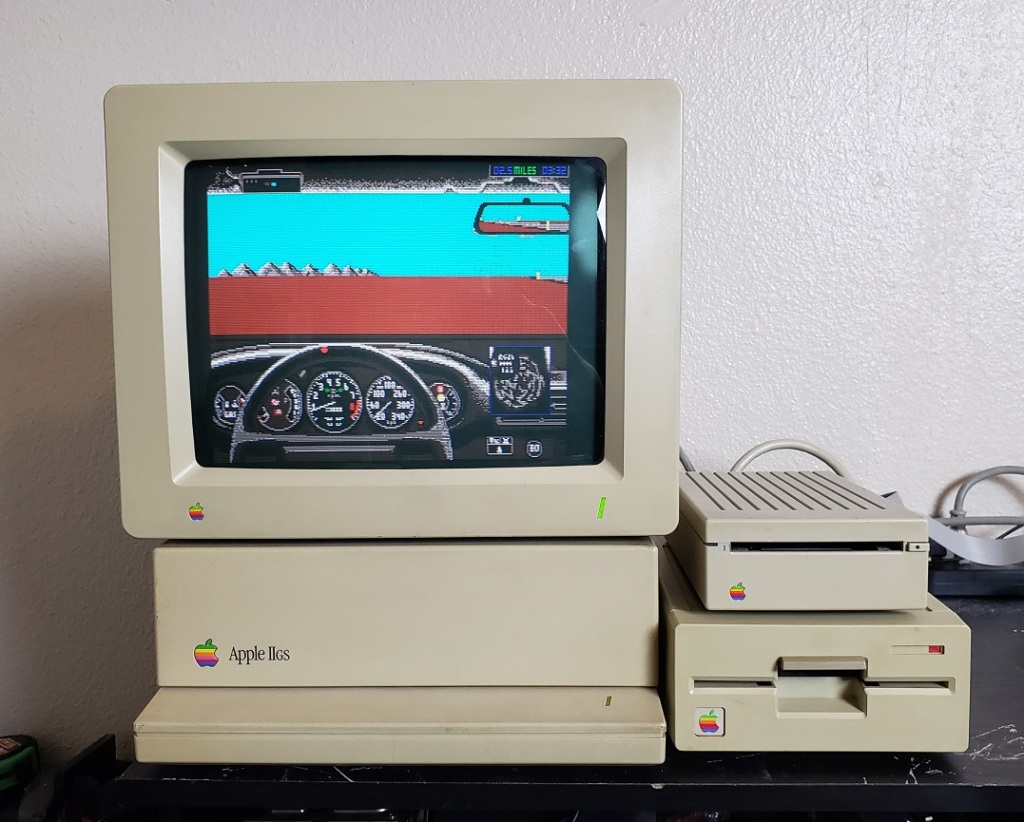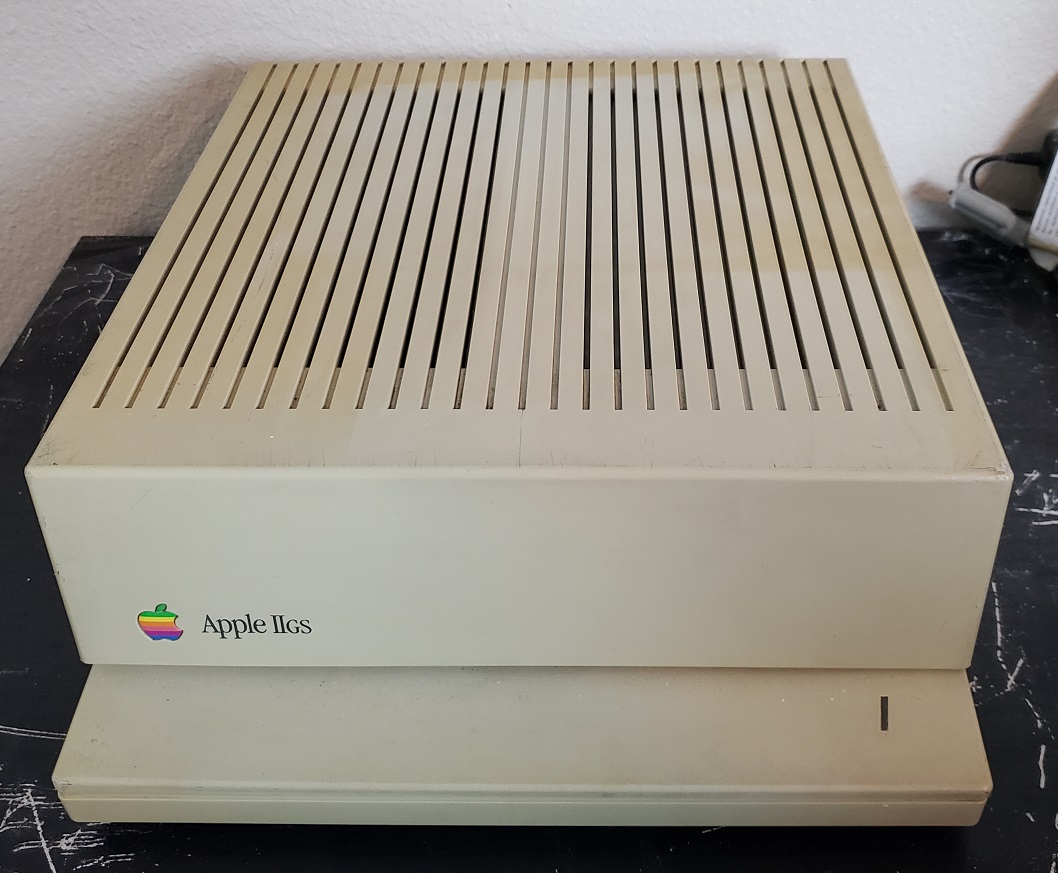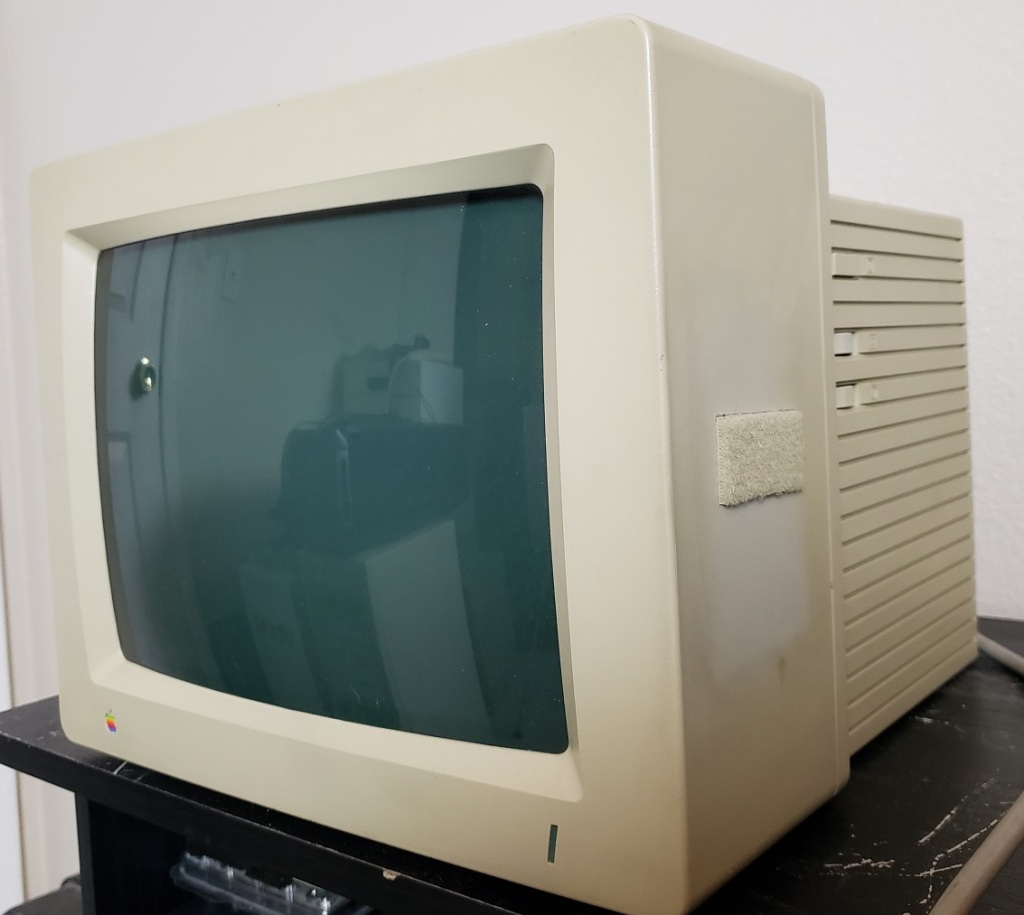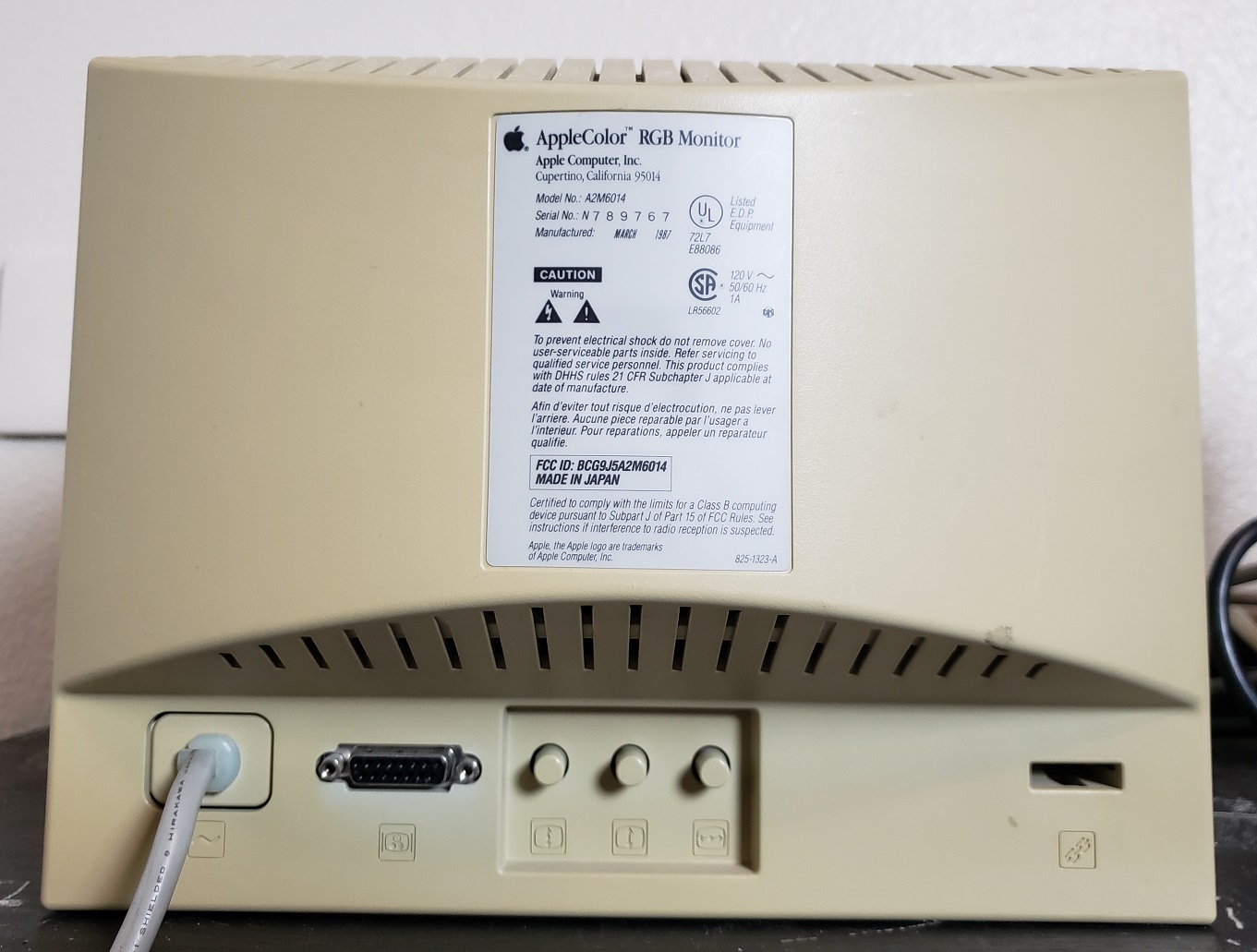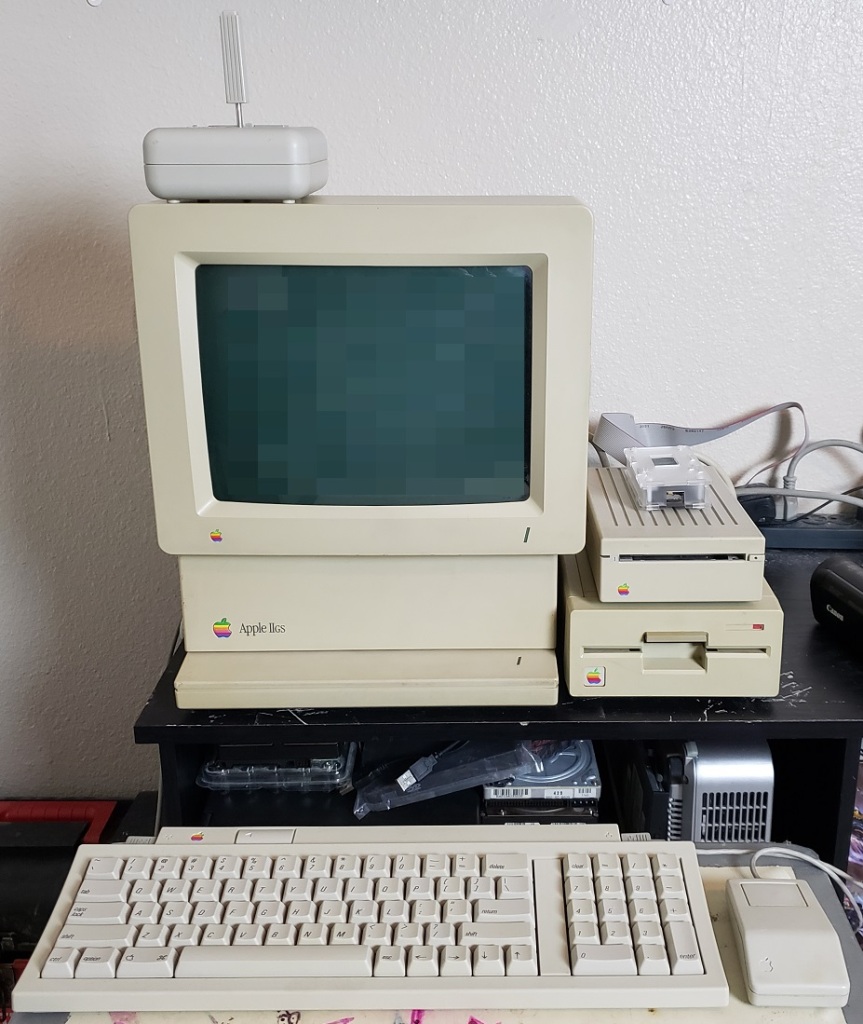
The Apple IIGS was released in 1986 and despite not being the final form of the Apple II released, would come to be the pinnacle of the Apple II line, despite having the IIe Platnium and IIc Plus released after it. Unlike the previously mentioned Apple IIe and Apple IIc which were minor improvements or portable versions of the previous Apple II the Apple IIgs was virtually an entirely different machine. The IIgs (which stands for graphics and sound) was a 16-bit PC as opposed to the 8-bit Apple II. Regarding sound and visual capabilities, the IIgs was more like the Amiga or the Atari ST than its fellow Apple IIs. The IIgs did however have very high compatibility with older Apple II software thanks to the Mega II chip on the motherboard which served as an Apple II on a chip. Unfortunately for the Apple IIgs its impact on the computing world was largely hampered due to Apple itself holding back the system due to a fear of it competing with its Macintosh line.
The Apple IIgs came in three major revisions, the ROM 0, ROM 1, and ROM 3 revisions. The best of these revisions is the ROM 3 due to the large 1MB of memory that came standard on the motherboard but today we will be looking at the still extremely capable ROM 1 revision.
Looking at the IIgs it’s immediately apparent this is a different case design from the earlier Apple line as well. Instead of the built-in keyboard design of the earlier models we have a very small and light case using the “snow white” case design. On the front, we have the Apple IIgs logo while on the right we have a slit located on the small ledge that comes out from the bottom of the case which is our green power LED light.
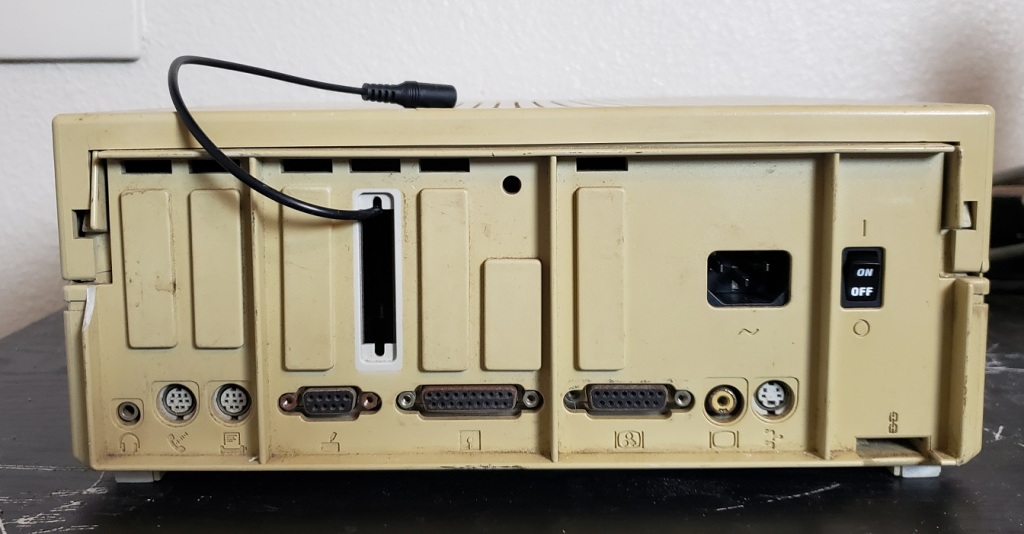
Looking at the rear of the case we can see that unlike the Apple IIe and previous Apple II’s the IIgs had a full complement of various ports built into the motherboard. starting on the lower left-hand side of the case we have a standard headphone audio jack (mono only), next an Apple-style modem and printer port, a joystick port, and then an external floppy drive port. Next, we have an RGB video out port. Note that this is a DA-15 Analog RGB video port and NOT a DB-15 video port as found on the Macintosh and is not compatible with VGA Macintosh monitors. Next to this, we have an RCA composite video jack for connecting to TVs or monitors like the Apple Color Composite monitor. Finally, we have an Apple ADB port for connecting various devices, most commonly a keyboard or mouse. The IIgs was the first computer to include this port and would become a standard port for Apple mice and keyboards much like the PS/2 port became that standard in the IBM compatibles world. Above these on the right is a standard 3-prong power connector and an on/off switch.
Before we take a look inside the case I think it’s worth looking at the external floppy drives as well as the monitor options available.
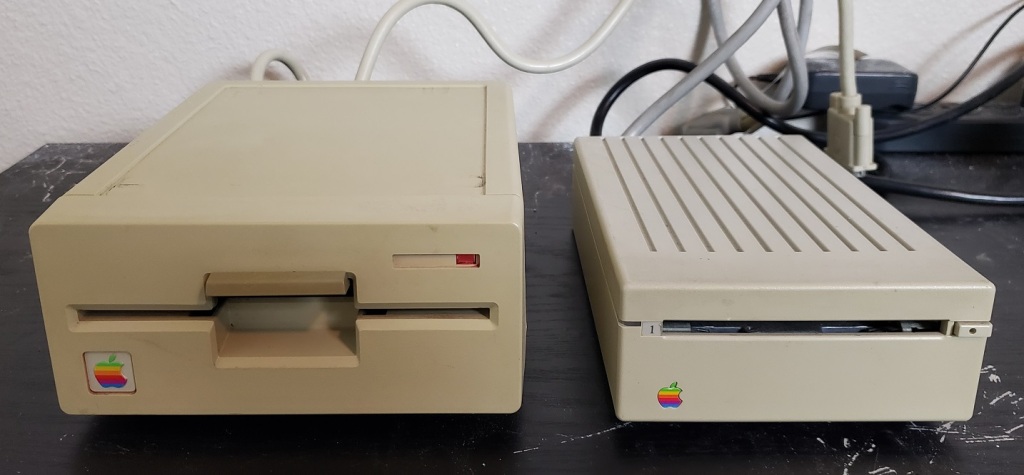
You’re most likely going to want to have both a newer style 5 1/4 Apple disk drive capable of reading 140k disks if you plan on running any Apple IIe software as well as a 3 1/2 Apple drive for running Apple IIgs specific software. These drives can be easily daisy-chained together to work on the single rear external floppy port. Older 5 1/4 drives like the Duo Disk drive can supposedly be made to work but some modification may be needed.
For a monitor, you can use the color composite out to display to any composite monitor or TV including the Apple Color Composite monitor. This is especially nice if you want to simply use the IIgs as an IIe and want a more authentic experience. The large composite monitor does look a bit goofy on top of the smaller IIgs case though.

There is however an official RGB monitor for the IIgs, the AppleColor RGB Monitor, model A2M6014.

This 12″ monitor fits very nicely atop the small IIgs case and gives a very nice sharp image for both Apple II and Apple IIgs games. Take note that this is a 15KHz analog RGB monitor and not VGA and this is why monitors meant for the Macintosh, despite physically being able to connect to the rear RGB port will not work. Other RGB monitors such as ones meant for the Commodore Amiga SHOULD work but I’ve read mixed results.
One other thing to note is that using an RGB monitor with some games meant for the Apple IIe can theoretically lead to some games looking incorrect due to the software expecting to be displayed on and taking advantage of the quirks of a composite monitor though I could not find any specific examples.
It’s also worth noting the IIgs will happily output from both its RGB and composite outputs simultaneously if one desires.
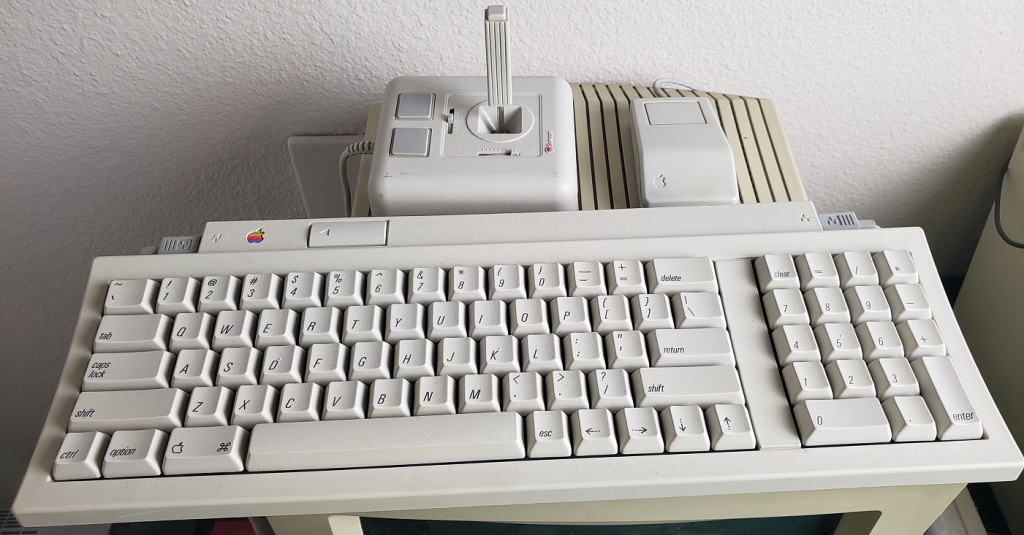
For mouse and keyboard I’m just using a standard ADB mouse and an Apple keyboard II. I do not believe these are the stock keyboard and mouse combo but they are very similar.
On power up the Apple IIgs if you hold down the option key on the keyboard the computer will boot into a control panel. From here you can adjust various things such as CPU speed, the internal clock, or the border and background colors, among other things.

Although you can play Apple IIe games on the faster settings for best compatibility it is suggested that the CPU speed be changed from “fast” to “normal” which downclocks the CPU to the original Apple IIs speed of 1.023MHz. For a more authentic experience, you can also change the border and background colors to black to mimic the look of the original Apple II line.
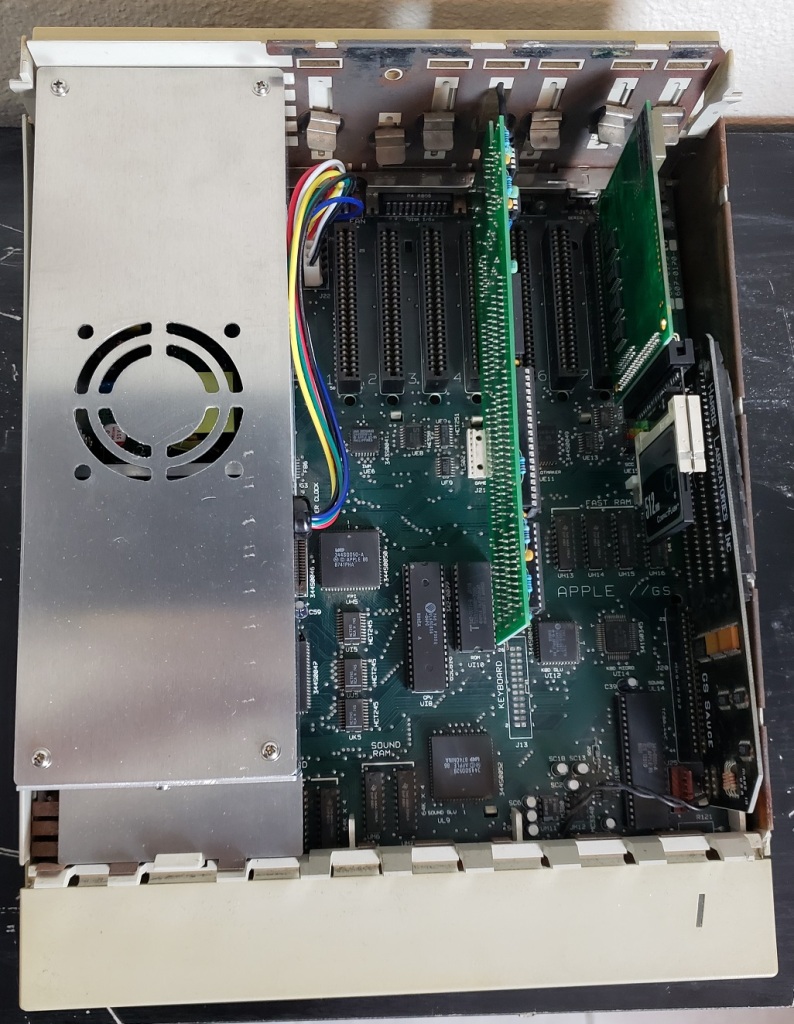
Here we have the inside of the case with my chosen expansion cards installed. I have replaced the power supply on the left with a modern equivalent as the original PSU swiftly failed upon acquiring this machine. The two main expansion cards I have installed are transfers from my Apple IIe which are my mockingboard sound card clone and my ReactiveMicro Turbo HDD controller card paired with a 512MB compact flash card acting as a hard drive.

Just like the previous Apple II computers the IIgs motherboard provides seven expansion slots. These slots are identical to the slots found on other Apple IIs and should be compatible with most if not all cards meant for the Apple IIe and earlier.
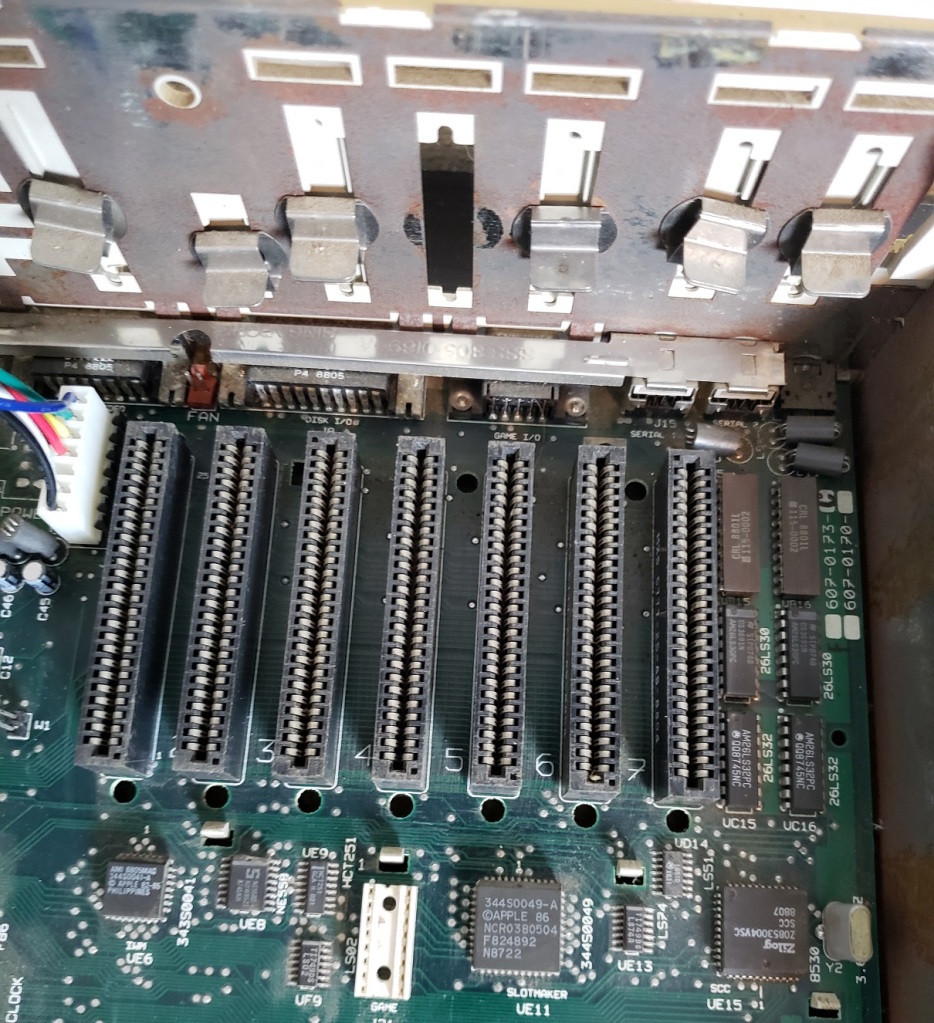
On the bottom right-hand corner of the motherboard, we have a connector for the internal speaker and above that we have another expansion slot, this slot is reserved for memory expansion cards. My ROM 1 revision has 256k total memory on the motherboard but I did add an expansion board to bring the memory total up to 1.25MB. This is enough memory to run most if not all Apple IIgs games and the graphical OS. Later ROM 3 revisions would ship with 1MB of memory soldered directly on the motherboard. The IIgs are capable of being expanded up to a total of 8MB.
I’m using an old Apple “GS Sauce” memory expansion board but newer boards are available.
CPU) The Apple IIgs uses a 16-bit 65C816 running at 2.8MHz. Unfortunately despite being a capable CPU the low clock speed can hinder performance in more demanding IIgs games and generally it is recommended to install an accelerator if you wish to fully utilize the potential of the IIgs. The 65C816 was available at higher clock speeds (up to 14MHz) though Apple chose to hobble the IIgs, supposedly so it wouldn’t compete with the company’s then-new Macintosh line of computers.
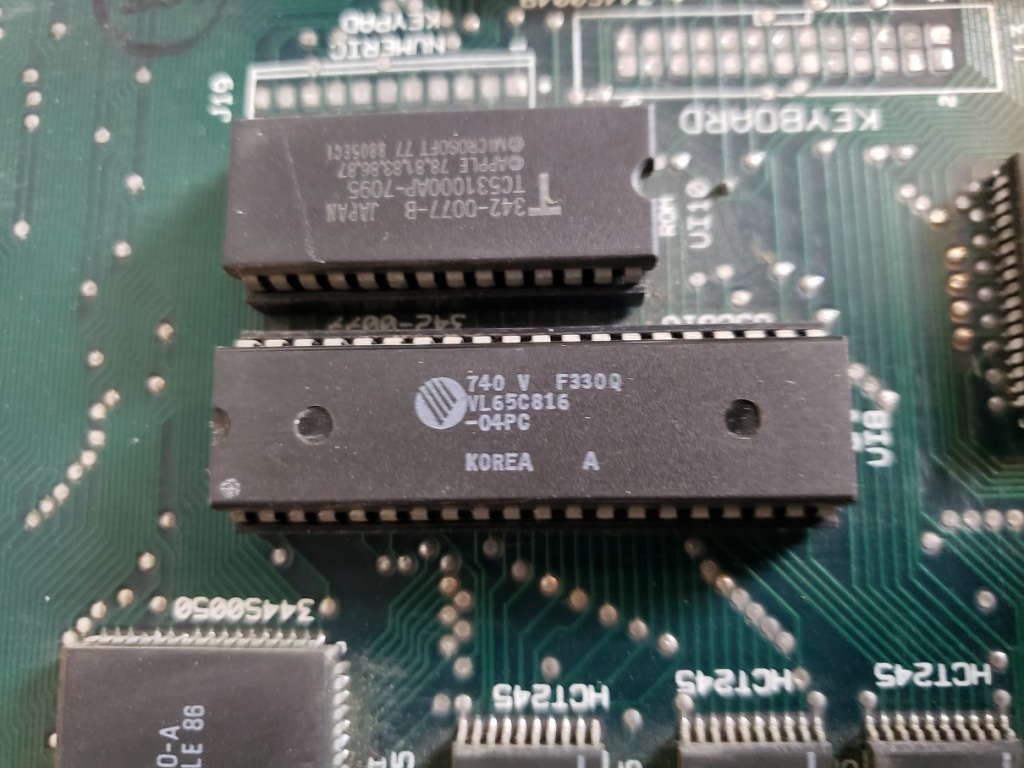
RAM ) The memory map of the IIgs is a bit convoluted with memory being located on several positions on the board labeled as “sound”, “standard” and “fast”.
Understanding how it works can be complicated so I’ll just quote Tofro, a member over at the Vintage Computer Forums.
“The lowest 128k are set up like in the IIc: (48k main memory + 16k “Language Card” memory) * 2. The language card memory is bank-switched with the Apple II ROMs, because when in 6502 mode, the IIgs can address no more than 64k without bank-switching ) and the IIGS needs to behave like an “old” Apple II.
The rest of the standard 256k is only accessible when the 65816 runs in its native, 16-bit mode. Any memory expansion that goes in simply linearly attaches to the 256k upwards.
The Apple II memory emulation is controlled by the “Mega II” chip that basically emulates a classic Apple II memory layout in the lowest 128k. This lower half of the IIGS standard memory is run at 1MHz, just like in the Apple II (so it’s “slow” memory).
The upper half of the 256k is run outside the bank-switched area controlled by the Mega II at full speed of the 65816, so it’s “fast memory” ran at 2.8MHz (and any memory you add using IIGS memory expansion cards is also “fast memory”).
None of the marked PCB areas are actually ROM. To make things even more complicated, the IIGS also has “slow” (i.e. Apple ][-compatible) ROM and “fast” ROM only used in IIGS-native mode”
Video ) The Apple IIgs can output resolutions up to 640×200 in various different palette modes. graphics in Apple IIgs software are roughly comparable to the Atari ST and Amiga in terms of looks. In Apple II emulation mode Apple II games will be displayed in RGB if an RGB monitor is connected, generally, this is not an issue though some games could theoretically look off due to the difference in quality and lack of composite dithering.
Sound ) Sound capabilities are a stand out on the IIgs and are provided by an Ensoniq 5503 DOC providing a maximum of 32 channels of sound. The memory labeled “sound” on the motherboard is 64k of dedicated memory for storing wavetable samples.

Mega II) The Mega II chip is basically an “Apple II on a chip”. When playing non IIgs, Apple II software this chip takes care of most of the functions of an entire Apple II computer. Apple claimed 95% compatibility with older 8-bit Apple II software though that percentage from what I can find on the internet may be even higher.
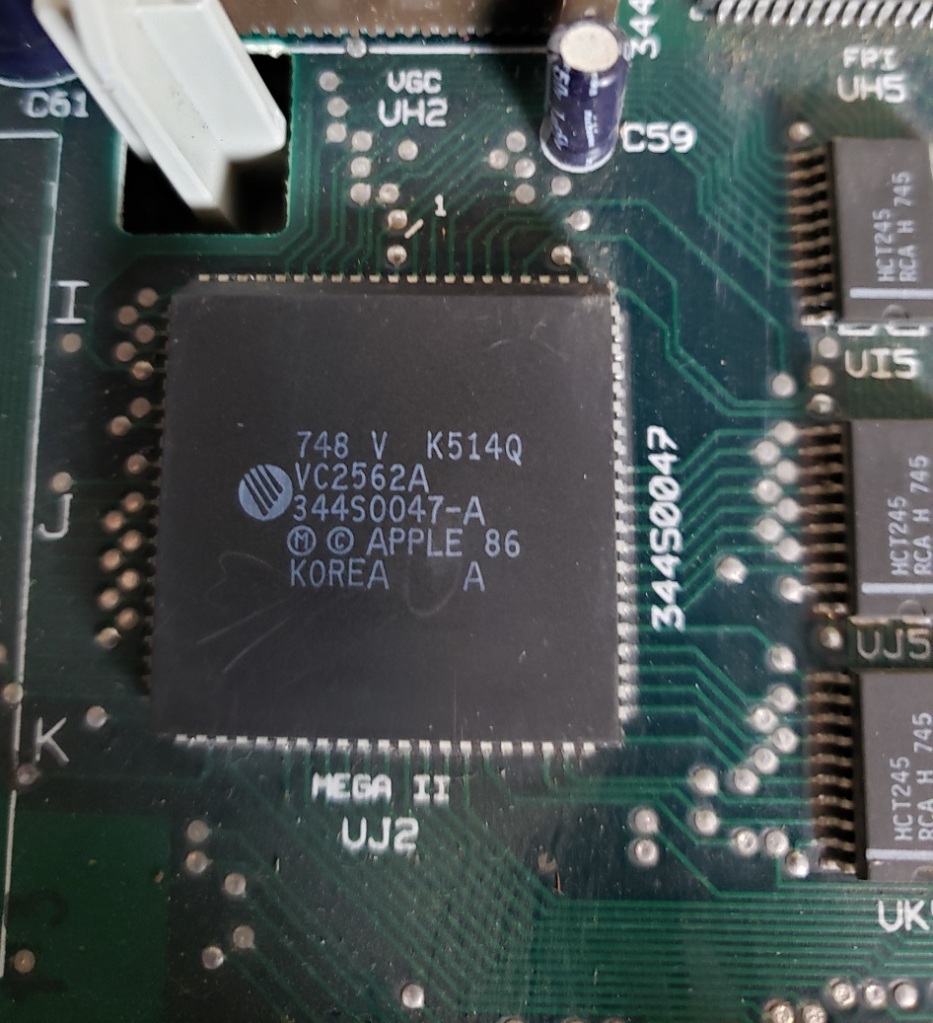
Battery ) On the earlier ROM 0 and ROM 1 machines the battery is soldered directly to the motherboard and will likely be dead and require replacement or removal to avoid battery leakage. This will require snipping the connections to the board. Be sure to snip the connections close to the battery since this will make it easier to either solder on a battery holder or clip on a new battery. Later ROM 2 revisions of the IIgs used a battery holder similar to ones found in many Macintosh computers.
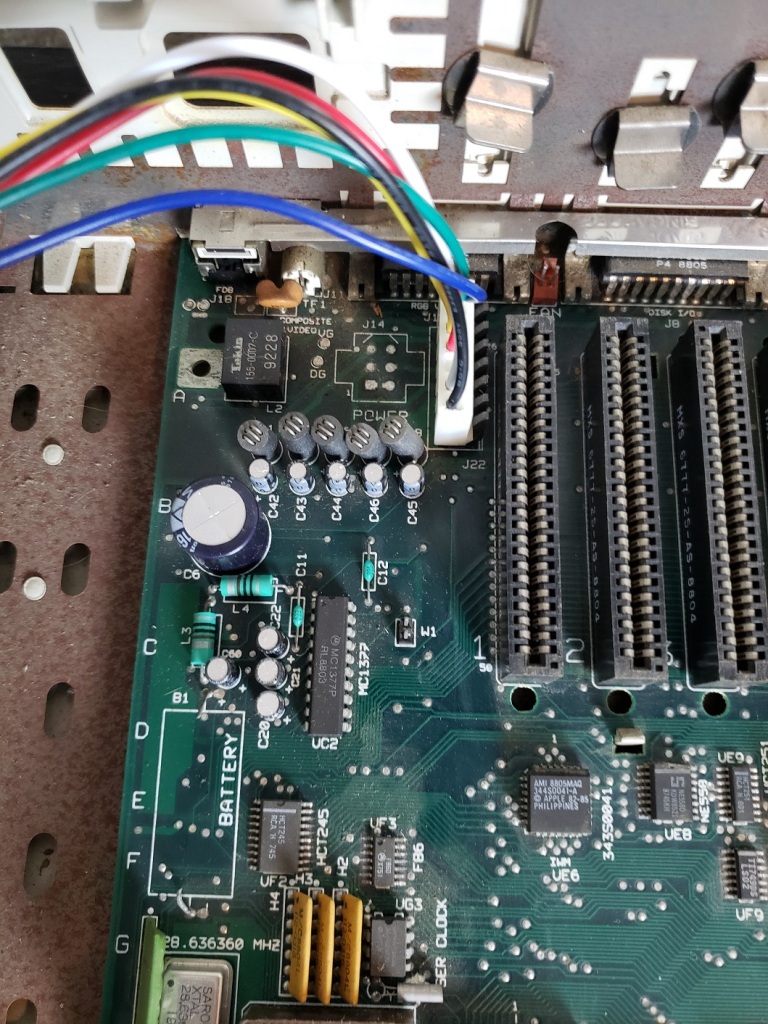
The Apple IIgs may be simultaneously the greatest of the Apple II line as well as the biggest missed opportunity. The excellent backward compatibility with the previous Apple II line gave this machine a massive backlog of software right out of the box while, besides its lower-clocked CPU, its video and sound capabilities gave the machine great potential to rival the Amiga, Atari ST, and other 16-bit competitors. Unfortunately Apple never really supported the IIgs in the way they should have and thus it never reached that potential. Although there is a good deal of Apple IIgs specific software it tends to be pricy while also available on other platforms. There really weren’t any exclusives for the IIgs with only the mediocre game Task Force coming to mind as an exclusive although the IIgs port of the arcade title, Rastan is said to be the best of the home conversions.
